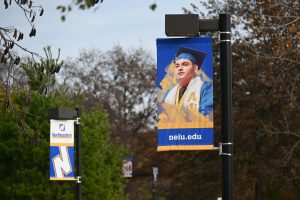White Sox of the future: Second base
October 8, 2019
Yolmer Sanchez
Yolmer Sanchez is a utilityman masquerading as an everyday starter. If we look beyond his inability to hit for power, Sanchez is not particularly bad in any one area. Unfortunately, aside from his plus glove, he doesn’t excel in any area either. He’s quick, but not a consistent base stealing threat. He can hit for a respectable-if-pedestrian average, but won’t hit for a high enough average to offset his lack of pop. Sure, Sanchez led the league in triples last season but also ended the season with a paltry .372 slugging percentage. His career on-base percentage sits at an unacceptable .299.
Yoan Moncada’s transition to third base served the purpose of opening up a position for MLB.com’s #41 overall prospect Nick Madrigal to assume once he receives his call-up. In the interim, Sanchez, a career swingman, was named the starter by default and underwhelmed in the role. Yolmer’s a great clubhouse presence–Sox’ manager Ricky Renteria calls him a “winning player”–but his on-field contributions have been underwhelming.
Nick Madrigal
Madrigal, the Sox first-round draft pick in the 2018 draft, was widely considered the best hitter in his draft class despite his diminutive stature. Like Sanchez, he doesn’t offer much from a power perspective–Madrigal has hit a total of 12 home runs over 1,412 at-bats between college and the minor leagues–but unlike Sanchez, what he lacks in power, he makes up for in fundamental hitting.
Madrigal doesn’t strike out. In his professional career, Madrigal has only struck out 21 times over 705 at-bats, earning him an extraordinary 2.97% K rate. To put that in perspective, Moncada, who currently ranks third in the American League in batting average, struck out in 25.2% of his minor league at-bats.
Madrigal also hits for average. At AA Birmingham, Madrigal sported an impressive .341 batting average. Upon his promotion to Triple A Charlotte, he continued his torrid pace to the tune of .331.
Finally, Madrigal is sound defensively, having committed only five errors in his professional career. Right now, barring an unforeseen development, second base is Madrigal’s position to lose.
Danny Mendick
Mendick is a dark horse candidate to man second base for the Chicago White Sox. First, he’s already reached the major leagues, giving him a head start to prove that he is capable of hitting major league pitching. In limited playing time, Mendick has proven just that, hitting .308 at the Major League level. Second, as a 22nd round draft pick, Mendick’s development wasn’t as meticulously monitored as some of his counterparts. Everything Mendick had achieved has been earned through merit.
Mendick has the ability to hit for a respectable average. However, he differentiates himself from Madrigal and Sanchez with his ability to hit for power, predominantly from the pull-side, as evidenced by his 17 home runs for AAA Charlotte. Furthermore, Mendick has displayed an ability to spray the ball to the opposite field, a skill that, combined with his defensive versatility, will likely earn him an opportunity to claim a roster spot in 2020.
If Mendick can maintain his power numbers and fine-tune his ability to hit for average, expect him to carve out a role in the MLB. If the Sox opt to stick with Mendick rather than Sanchez, expect him to assume the role of super-utility player.
Laz Rivera
Rivera skyrocketed up the White Sox prospect board thanks to a breakout campaign at Low-A Kannapolis that saw him hit .346 over 265 plate appearances. However, at age 23, Rivera was relatively old for Low-A ball, having been a full 1.6 years older than the average Low-A baseball player.
Unfortunately, Rivera failed to impress upon his promotion to age-appropriate AA Birmingham, where he regressed to a disappointing .246 average. If Rivera is unable to hit for average, his value to the White Sox will be limited. He’s not an adept base stealer, having been caught stealing more often than he was successful in 2019 (a 10-to-11 ratio). While he flashed power potential last season, the 6’1 Rivera only managed two home runs in all of 2019.
Rivera does possess solid gap power, flashing an impressive ability to barrel the ball when he’s on top of his game. However, advanced pitching prospects have been able to exploit his impatience at the plate, with Rivera sporting an unsightly 17-to-81 K/BB ratio.
Rivera’s age is operating against him at this point. If Rivera is unable to rediscover what made him successful in 2018, look for the Sox to cut ties with him. If he can boost his average and rediscover the occasional pop he offered in 2018, Rivera has the potential to challenge Mendick and Sanchez for the White Sox’ utility role.








